SUMMARY
This is AI generated summarization, which may have errors. For context, always refer to the full article.
![[ANALYSIS] Streamlining our COVID-19 vaccination process](https://www.rappler.com/tachyon/2021/05/Improving-COVI19-vaccination-May-15-2021.jpg)
I have been critical of the national government’s handling of the second surge of COVID-19 in the NCR because I know that the surge’s power and ferocity could have been prevented with an earlier lockdown in March. We did not have to witness the tragic images of our kababayans and their caregivers sleeping on cardboard mats on the floors of the emergency rooms of our public hospitals like the National Kidney and Transplant Institute in Quezon City.
However, we should be critical only when the evidence calls for it. Despite the protestations of some politicians and commentators, the slow rollout of the COVID-19 vaccines in the Philippines is not the fault of the national government. At this time, there is a severe global shortage of vaccines that can be attributed to both the limited manufacturing capacity of vaccine producers and the vaccine hoarding by countries in the developed world. There simply is not enough vaccines for our national government to buy.
The United States and several other developed countries are expected to complete their vaccination plans by the end of the second quarter. This should release a significant supply of vaccines for the rest of the world, including the Philippines. This is why the national government is planning to ramp up its vaccination rollout in June and July.
What should we do while we wait? We should take advantage of the next few months to streamline our vaccination process to increase the numbers of people who can be inoculated in our vaccination centers every day. During the height of the surge in the NCR, I heard stories of senior citizens waiting in line for up to six hours in crowded vaccination centers. This is unacceptable! It heightens the risk of our lolos and lolas becoming infected with COVID-19 while waiting for their vaccines.
Therefore, we should ask probing questions about the current vaccination process to improve patient flow through our vaccination centers.
First, why is the DOH health declaration form that is required for our kababayans to complete before they can be inoculated so confusing? I did not know how to answer all the questions on the form. And I have a doctorate in science!
For example, one of the questions asks: “Has no allergy to food, egg, medicines, and no asthma?” and asks you to respond, Yes or No. This is confusing. How am I supposed to answer this question – really two questions – if I have no allergies, but do have asthma? NO and YES? Instead, the question should be split into two questions, each of which is a simple positive question: Are you allergic to food, eggs, or medicines? Yes or No. Do you have asthma? Yes or No.
Another question is just two words long: “Not pregnant?” and asks you to respond, Yes or No. This question is not clear. Think about it: How am I supposed to answer the question if I am not pregnant? Should I check the YES box to say, Yes, I am not pregnant, or the NO box to say, No, I am not pregnant? Both responses make sense as possible answers to this question, which is why it is confusing. Instead, why not simply ask the patient: “Are you pregnant?” This positive question is straightforward. It is much easier to answer.
The fundamental problem with the current DOH health declaration questionnaire is that the questions were formulated as negative statements that sometimes involved two questions rolled into one. Instead, the form should be re-written to include simple, one-point-only questions written as positive statements. Fewer confusing DOH questions, more vaccinations per day!
Second, why is the DOH informed consent form for vaccination so long and complicated? The English informed consent form for the Sinovac vaccine that I read this week was six paragraphs in length! The first sentence was 88 words long! Furthermore, it contained language that would not be understandable by Filipinos like my lola who did not complete elementary school. For instance, would most Filipinos understand what it means when they’re told that they have been given “the autonomy to decide to be vaccinated…without prejudice to immediate eligibility for other vaccines”? A person cannot give informed consent if he or she does not understand the informed consent document!
Instead, in one or two paragraphs of short sentences, the informed consent form should simply ask our kababayans to affirm that they are aware of the purpose and risks of the COVID-19 vaccine. Shorter informed consent forms, more vaccinations per day!
Moreover, the current informed consent form only covers one dose of a two-dose vaccine regimen. Instead, the informed consent form should cover both doses of a vaccine instead of just one. This way, patients returning for their second dose would not have to sign a new informed consent form. They have already consented by returning for the second dose knowing what they know from the first jab. This is one less form for our kababayans returning for their second dose. Fewer forms, more vaccinations per day!
Finally, why is the current informed consent form asking patients if they are refusing a vaccine? Do we really expect a Filipino to make a vaccination appointment so that he can wake up in the morning at 7 am, travel to the vaccination center, and wait in line for an hour, just to tell the national government or the LGU that he does not want to be vaccinated? Those who do not want a vaccine will not go to the vaccination center to fill out an informed consent form. Eliminate the refusal section. Shorter informed consent forms, more vaccinations per day!
Third, why are we taking the blood pressure measurements of our kababayans at our vaccination centers? My BP was not recorded when I had either of my two Moderna shots in the USA. Is even one BP measurement necessary for everyone? Especially since we already expect that many people being vaccinated will have elevated blood pressures because of fear and anxiety triggered by the vaccination process itself? If we are worried about our kababayans becoming unwell after they are inoculated, we should simply ask them how they feel. Fewer BP readings, more vaccinations per day!
Fourth, do we need doctors to screen our kababayans at our vaccination centers? I am concerned that a lolo or a lola or just about anyone who encounters a physician will see this as an opportunity for a medical consultation. The vaccination line is neither the time nor the place for such a conversation. Instead, the team of doctors should be replaced by a team of non-physician screeners who are able to scan the YES’s and NO’s on the health declaration form to quickly identify patients who should not be inoculated. This team can be supervised by a single doctor who can be called to the screening point if a specific question is raised during review of the health declaration. Fewer doctors screening, more vaccinations per day!
(From what I understand, doctors are needed at the screening points at this time because a significant number of our kababayans do not understand the questions of the current DOH health declaration form! If we improve the form as described above, this bottleneck should be eliminated.)
Fifth and finally, we need to optimize vaccination data collection and data sharing among our LGUs, especially those in the NCR. After two months of our national vaccination rollout, do we know if the LGUs are informed if their residents have been vaccinated in another LGU? When the bulk of our vaccines begin to arrive in June and July, we need to make sure that our citizens are not getting doubly vaccinated. More data sharing, more vaccinations per day!
(I actually know of someone who was intending to get vaccinated twice this week at two different LGUs in the NCR “to improve her protection against COVID-19.” I told her that vaccinations do not work this way.)
In the end, we need to eliminate all unnecessary persons, words, and forms that delay the vaccination of our kababayans. Fewer roadblocks, more vaccinations per day. More vaccinations per day, fewer weeks till herd immunity. Fewer weeks till herd immunity, more likely that pasko will be more normal this year. This is our goal and our prayer. – Rappler.com
Reverend Fr. Nicanor Austriaco, OP is Visiting Professor of Biological Sciences at the University of Santo Tomas, and an OCTA Research Fellow.
Add a comment
How does this make you feel?

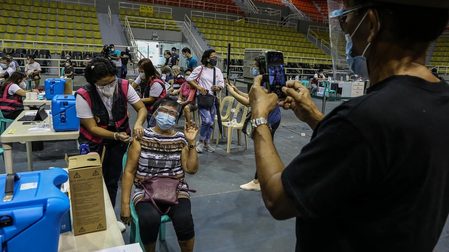
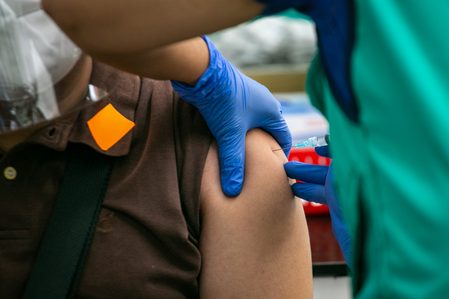


![[Time Trowel] Evolution and the sneakiness of COVID](https://www.rappler.com/tachyon/2024/02/tl-evolution-covid.jpg?resize=257%2C257&crop=455px%2C0px%2C1080px%2C1080px)


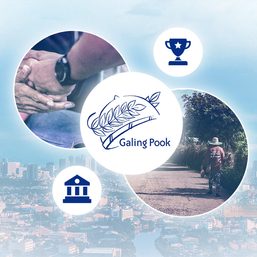
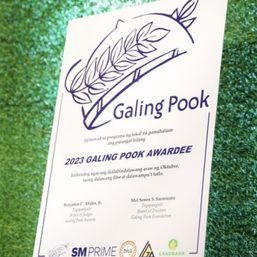
![[Newsstand] The Marcoses’ three-body problem](https://www.rappler.com/tachyon/2024/04/tl-marcoses-3-body-problem.jpg?resize=257%2C257&crop=451px%2C0px%2C1080px%2C1080px)
![[Edgewise] Preface to ‘A Fortunate Country,’ a social idealist novel](https://www.rappler.com/tachyon/2024/02/a-fortunate-country-february-8-2024.jpg?resize=257%2C257&crop_strategy=attention)
![[New School] When barangays lose their purpose](https://www.rappler.com/tachyon/2024/02/new-school-barangay.jpg?resize=257%2C257&crop=414px%2C0px%2C1080px%2C1080px)
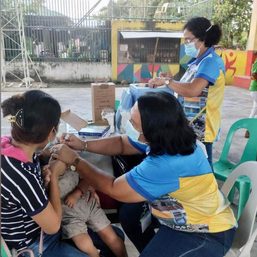
![[Free to Disagree] Sabwatan ng mga doktor at drug companies](https://www.rappler.com/tachyon/2024/04/tl-sabwatan-doktor-drug-companies-April-22-2024.jpg?resize=257%2C257&crop=292px%2C0px%2C720px%2C720px)
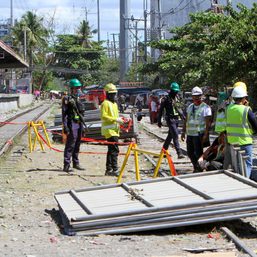

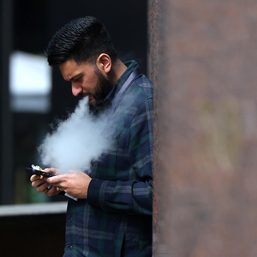
There are no comments yet. Add your comment to start the conversation.